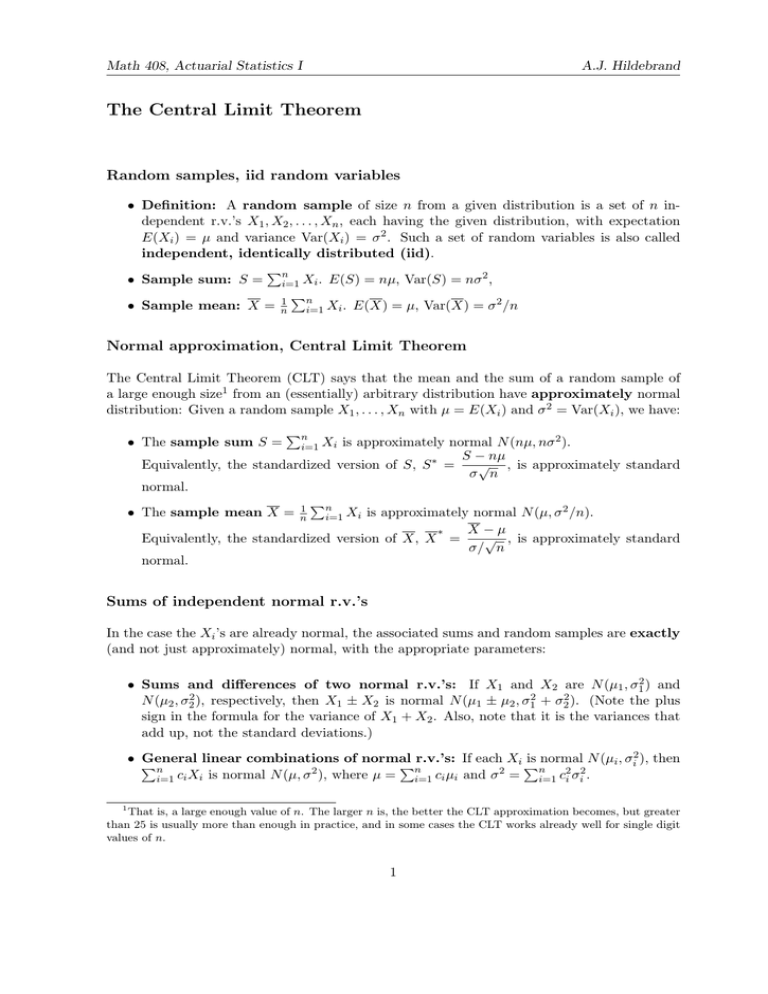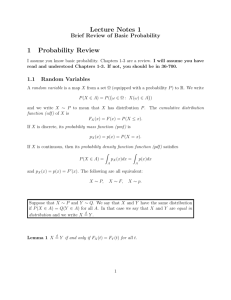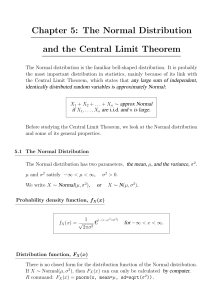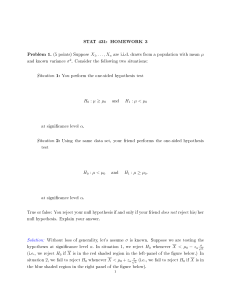The Central Limit Theorem
advertisement

Math 408, Actuarial Statistics I A.J. Hildebrand The Central Limit Theorem Random samples, iid random variables • Definition: A random sample of size n from a given distribution is a set of n independent r.v.’s X1 , X2 , . . . , Xn , each having the given distribution, with expectation E(Xi ) = µ and variance Var(Xi ) = σ 2 . Such a set of random variables is also called independent, identically distributed (iid). P • Sample sum: S = ni=1 Xi . E(S) = nµ, Var(S) = nσ 2 , P • Sample mean: X = n1 ni=1 Xi . E(X) = µ, Var(X) = σ 2 /n Normal approximation, Central Limit Theorem The Central Limit Theorem (CLT) says that the mean and the sum of a random sample of a large enough size1 from an (essentially) arbitrary distribution have approximately normal distribution: Given a random sample X1 , . . . , Xn with µ = E(Xi ) and σ 2 = Var(Xi ), we have: Pn is approximately normal N (nµ, nσ 2 ). S − nµ √ , is approximately standard Equivalently, the standardized version of S, S ∗ = σ n normal. P • The sample mean X = n1 ni=1 Xi is approximately normal N (µ, σ 2 /n). X −µ ∗ √ , is approximately standard Equivalently, the standardized version of X, X = σ/ n normal. • The sample sum S = i=1 Xi Sums of independent normal r.v.’s In the case the Xi ’s are already normal, the associated sums and random samples are exactly (and not just approximately) normal, with the appropriate parameters: • Sums and differences of two normal r.v.’s: If X1 and X2 are N (µ1 , σ12 ) and N (µ2 , σ22 ), respectively, then X1 ± X2 is normal N (µ1 ± µ2 , σ12 + σ22 ). (Note the plus sign in the formula for the variance of X1 + X2 . Also, note that it is the variances that add up, not the standard deviations.) • P General linear combinations of normal is normal N (µi , σi2 ), then Pnr.v.’s: If each2 Xi P n n 2 2 2 i=1 ci Xi is normal N (µ, σ ), where µ = i=1 ci µi and σ = i=1 ci σi . 1 That is, a large enough value of n. The larger n is, the better the CLT approximation becomes, but greater than 25 is usually more than enough in practice, and in some cases the CLT works already well for single digit values of n. 1







